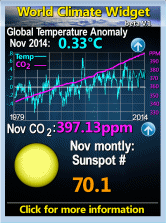One of those is suggested by geomagnetics work done by John Hampson, as shown in his MT Stock Market Model showing a full 2012 year forecast. This work in his MT Model is based on geomagnetism plus Bradley turn dates and new/full moons, and you can study it at his website at: http://amalgamator.co.uk/MTStockMarketModel.aspx.
Another is Fibonacci - one of the Fibonnaci time cycles work I've done is to take the 17-month decline from October 2007 to March 2009 (interesting in itself as two times 8.6 months, where 8.6 may be a basic time interval), and project highs at the 1.382, 1.618 and 1.786 projections - all of which did occur during 2011. This month, January 2012, is the 2.0 time extension, which I originally thought could also produce a high. Later I'd become concerned that it could be a low, based upon a certain view about cycle lows from Terry Laundry's T Theory, but that clearly didn't happen. Instead, the cycle high projected by Jim Curry for this time period seems to be converging with this Fibonacci time extension.
The idea of this month being the 2.0 time extension also means it's possible to see a high-low-high/low-high cycle playing out, based on the 17-month time periods. If the 17-month period retains predictive strength going forward, then it may point to a significant low (or high, but I'm guessing low) in June 2013.


The big question of course is whether stocks are topping out for a big move down, or just positioning for a pullback before another thrust upward. Honestly I can see it either way. The bullish percent for Nasdaq is getting overbought with a little negative divergence, and there's negative divergence in the McClellan Oscillator (for NYMEX and SPX) too. The Nasdaq is leading both SPX and the Dow Industrials by having exceeded its 2011 highs, but that might also be negative divergence among the indices. Near-term, I think we just need to see if the SPX makes it past 1327 (bullish if 1327 becomes support), or goes under 1307 (bearish).
At least, it look prudent to keep on watch for a potential reversal, which is what I recommend that KI$$ investors and swing traders do here.
If you're looking for a turn in something, check out high-quality corporate bonds. You can see below that corporate bonds have also continued to perform very well. Both LQD, representing high-quality bonds, and HYG representing high-yield corporate bonds, have continued bounding upward. LQD has now already exceeded its P&F projection, and HYG now has a new higher P&F target (114) based on its breakout. There is some negative divergence, however. Look especially at the LQD monthly chart - the StockRSI indicator is retesting up to its midline. When this occurs as price is tagging new highs, it is a warning and possibly a preliminary sell signal. It would be prudent to give it another day or two and look for price to close in the lower third of a daily range and below the low of the prior day that tags a high.
As part of this view, I'd like to note that LQD rose above the 109 price that was a Fibonacci extension, and then tested it as support before resuming the current rise. If LQD moves back under 109 on the next drop, it will be an important signal that it will have lower levels to test.








No comments:
Post a Comment